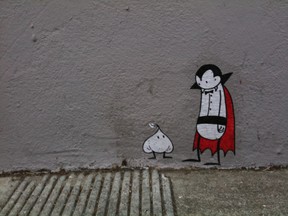 Usually the villagers and/or families in peril knew precisely where their vampire's grave was located. It was generally (and tragically) a deceased family member.
Usually the villagers and/or families in peril knew precisely where their vampire's grave was located. It was generally (and tragically) a deceased family member.
Occasionally an area would be threatened by an unknown blood-sucker. Steps could be taken to locate the grave (like releasing ravens to find it), but in the meantime, the best that the people could do was hope to keep the creature away.
Much of our modern vampire lore comes from Bram Stoker. He did his research too. He took reams of disparate folklore from around the world, then picked and mixed what would ultimately end up in Dracula.
He enriched it with several inventions of his own. Vampires have no reflections in mirrors, because Bram Stoker wanted something to indicate visually that they had no soul.
He also took a brief mention of garlic and made it the vegetable weapon of choice against the vampiric undead. He could just as easily have gone for turmeric. That herb was mentioned in the same Roma folklore from which he lifted the notion of garlic.
But then garlic was more common in both Britain and Ireland, while turmeric (aka Indian Saffron) could be expensive to acquire. Maybe Stoker wanted to give his human readers a fighting chance! Yet it's never explained why garlic (or turmeric) would repel the undead.
A clue could lie in the fact that garlic is a very healthy food to eat. Its properties render it a strong favorite for nutritionists today. Historically, it was also viewed as a kind of 'cure-all'. If it was that good for the body, then it could be great for the soul too.
For that reason, the Classical Age Greeks left cloves of it at cross-roads, so that the Goddess Hecate could snack on it. Shop-keepers in India would hang it up to ward off evil spirits. And, if Pliny is to be believed, the ancient Egyptians worshiped garlic and onions as practical deities.
These traditions trickled into Europe with the Roma, then attached themselves to warding away vampires too. But, in truth, garlic would have to be a pretty good cure-all to combat actually being dead. I doubt a single clove is going to cut it.
Turmeric and garlic were just a couple amongst a myriad of protections to ward away vampires. Another included giving them a mirror. The creatures were so self-absorbed, they'd become enthralled by their own reflection. Their erstwhile victim could then make a clean getaway.
Alternatively, rice could be scattered on the floor. The vampire would become overcome by the need to count them. A whole night could pass in safety, if you just kept adding more dried rice to occupy the undead.
I don't recall any of this turning up in Twilight.


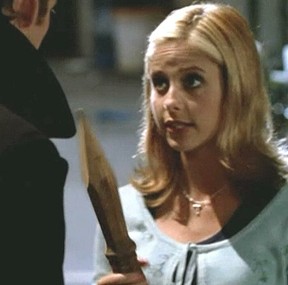 The scene's been made famous from Dracula to Buffy, through Being Human and Blade.
The scene's been made famous from Dracula to Buffy, through Being Human and Blade. 


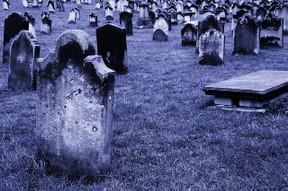 Your average medieval vampire slayer would take one look at the modern day stakes and laugh in your face.
Your average medieval vampire slayer would take one look at the modern day stakes and laugh in your face.


 Usually the villagers and/or families in peril knew precisely where their vampire's grave was located. It was generally (and tragically) a deceased family member.
Usually the villagers and/or families in peril knew precisely where their vampire's grave was located. It was generally (and tragically) a deceased family member.

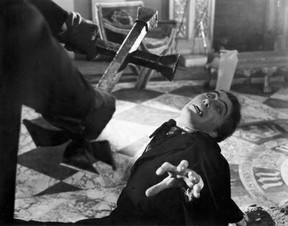 The good people of Medieval Europe were very firm on their notions of what happened when you died. You went to Heaven or Hell. There might be levels of purgatory or limbo along the way, but ultimately you were in the hands of deity.
The good people of Medieval Europe were very firm on their notions of what happened when you died. You went to Heaven or Hell. There might be levels of purgatory or limbo along the way, but ultimately you were in the hands of deity.


 Stakes only work if the vampire is in its grave. Even then it has to be the right sort of stake and it doesn't kill them. It merely pins them to the Earth, to live out eternity unable to leave their coffin.
Stakes only work if the vampire is in its grave. Even then it has to be the right sort of stake and it doesn't kill them. It merely pins them to the Earth, to live out eternity unable to leave their coffin.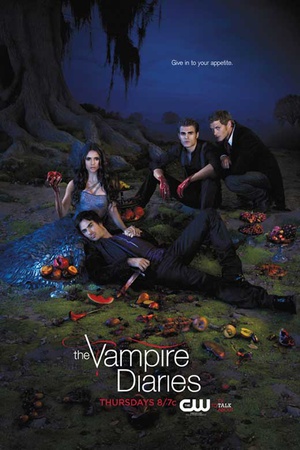




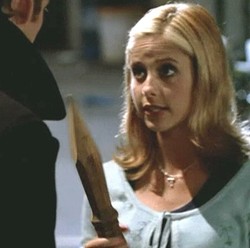

 St Tydecho's Churches in West Waleson 09/03/2014
St Tydecho's Churches in West Waleson 09/03/2014
 Goodies for an Outlander Premiere Partyon 03/06/2015
Goodies for an Outlander Premiere Partyon 03/06/2015
 Holocaust Memorial Day Interview with Rainer Höss, Grandson of Rudolf Architect of Auschwitzon 01/24/2015
Holocaust Memorial Day Interview with Rainer Höss, Grandson of Rudolf Architect of Auschwitzon 01/24/2015
 Romantic Valentine Gifts for an Outlander Fanon 01/16/2015
Romantic Valentine Gifts for an Outlander Fanon 01/16/2015
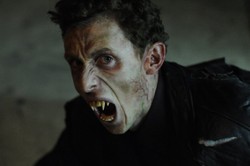

Comments
Nice one! I will check that out. Thanks!
It's a book series. If you like it I suggest buying the three novels in one books. I did because it saves a lot of money all things considered.
XD I like it! I've not read that series, so thank you for alerting me to it. Are they novels or a TV show? I could just go and look this up, couldn't I?
One of my favorite vampire series, The Vampire Files by P.N. Elrod, goes into this the first time the two main characters meet. One had just recently been made a vampire but before he was he met another vampire who became his sire so to speak. Before they exchanged blood he did a lot of research into vampires and asked his sire what was real and what wasn't. When the two main characters meet later on they go over what he had learned. One funny part that stood out to me was after the vampire had explained why garlic was suggested it could be used, since it was a sort of cure-all elsewhere, he said something like, "What use is something that smells bad to someone who doesn't have to breathe?" XD
Wow! That is really interesting. You're the perfect person to add information about this stuff too, seeing as Bram Stoker was only half understanding folklore from your region, and you have medical knowledge too.
I was waffling on over here: http://wizzley.com/why-are-we-afraid-... about how Bram Stoker (being Victorian and all) was actually writing about a threat from the Balkans. It was because of the wars over there, which Britain was contributing greatly to by being imperialistic. To a Briton of that time, the Balkans = war + foreign.
I'd love to read an article from you about vampirism. So much of what we have in our traditions over here are watered down and misunderstood versions of your legends. Even if it was further East and not actually in Slovenia!
Vampires infested the rest of Europe (and eventually Great Britain) from Balkan although they were always rare in my (Western) part of Balkan. I can still add one more simple fact to your research of the vampire stakes. Corpses of some people who died of specific diseases (I believe anthrax tops the list and rabies is close second) didn't look as they should be.
After several days they bloated (some other symptoms occurred, blood coming out of mouth for instance) and if they were not buried deep enough, they could 'rise'. So a hole in a chest with sharp object (wood is widely available in Balkan...) was made to release the gases and corpse would stay where is supposed to. Sure we can get into magic properties of wood, different sorts of wood in different areas of Europe (always the sort which is available, nothing imported please) but we want to stay practical here, right?
Oh no! I forgot about the brick in the mouth. Are those the pictures from Bulgaria? Great find!